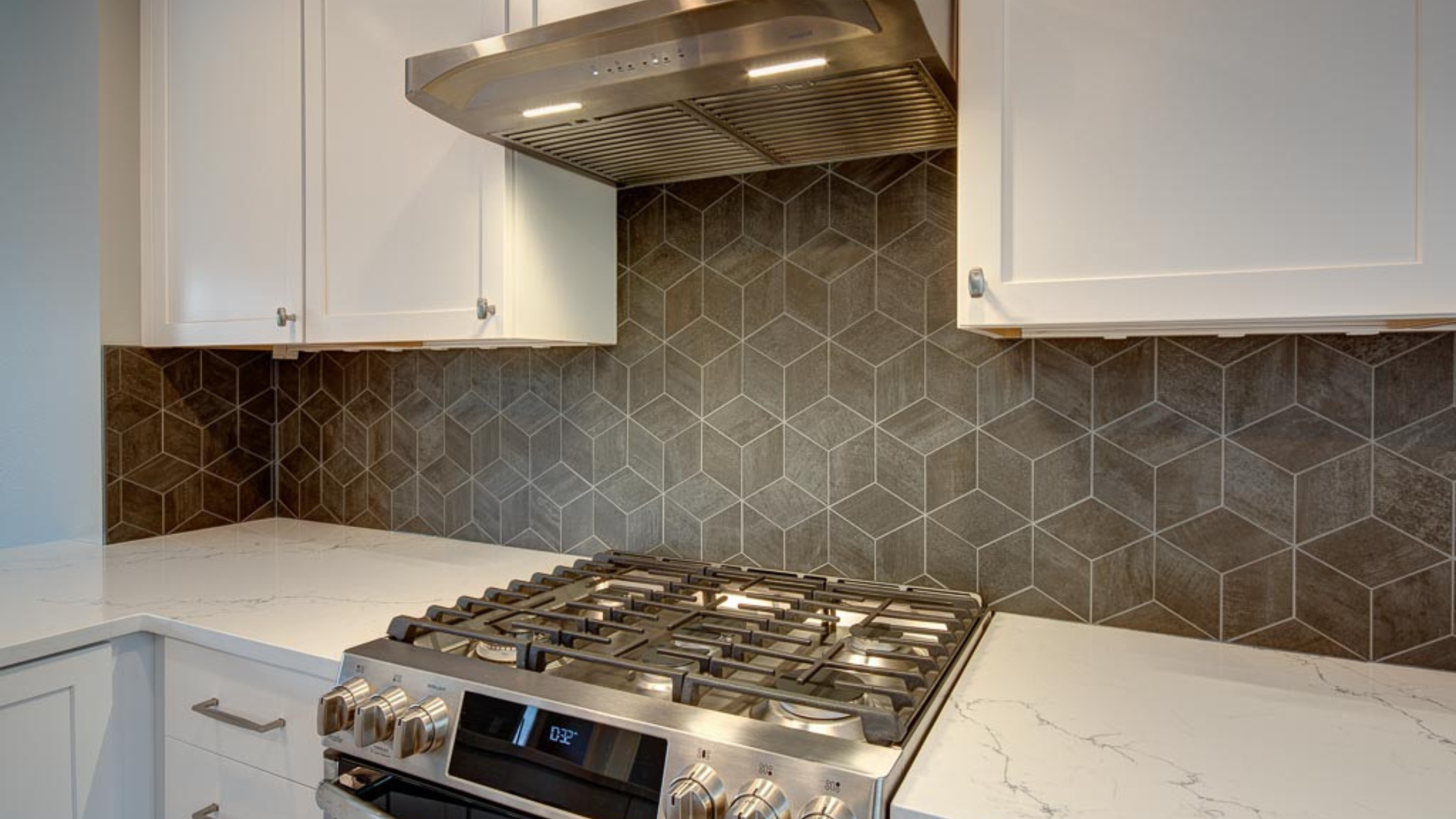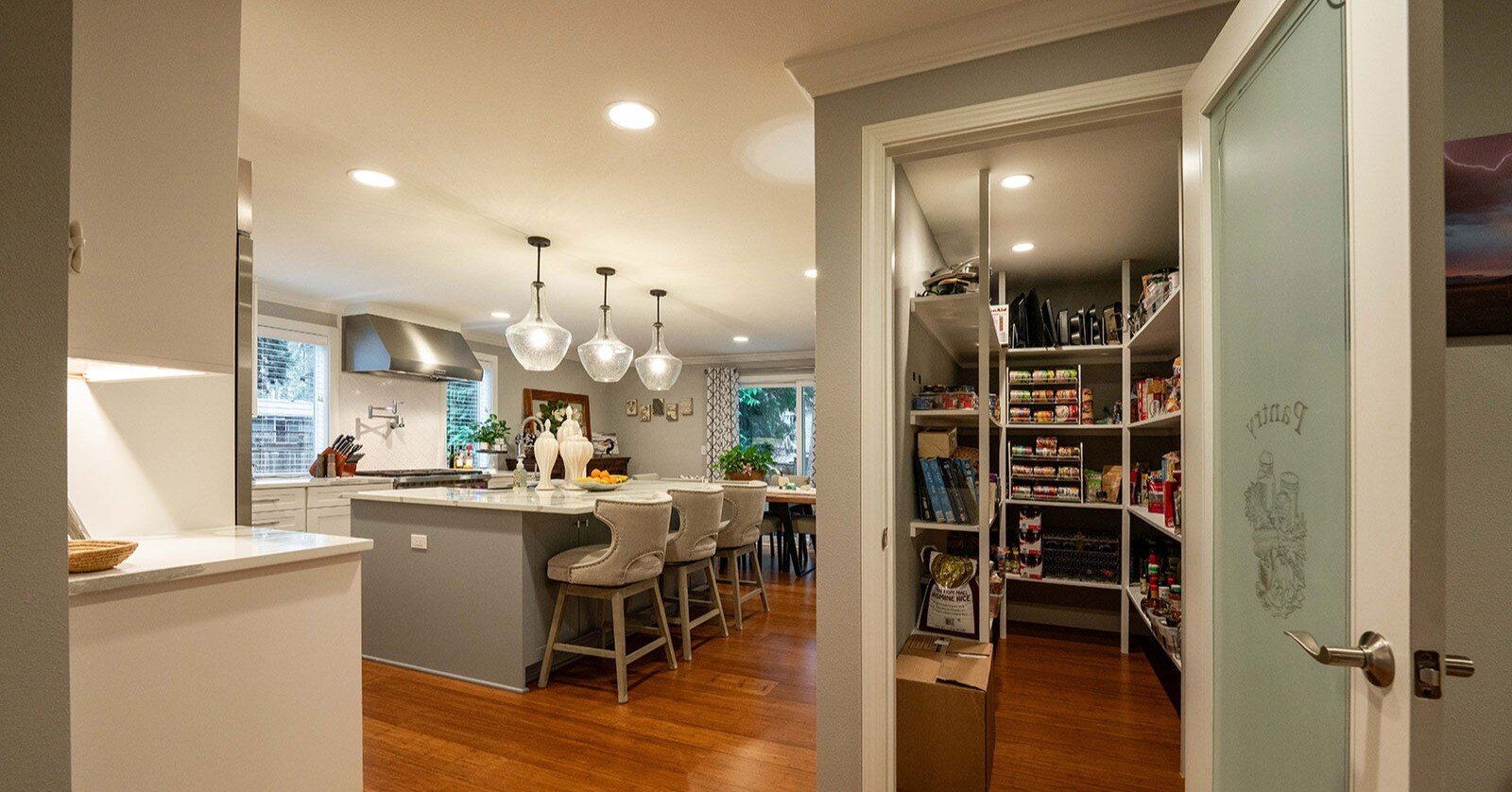When remodeling a kitchen, you have dozens of decisions to make. From major picks like cabinetry and appliances to little details like knobs or pulls, there’s a lot to think about. One of the biggest design choices homeowners make in a kitchen is what material to use for the countertops. While the options may seem endless, the most common debate is quartz vs. granite. While both are beautiful, each has its own pros and cons.
Image courtesy of The Spruce
Quartz Countertop
Quartz is a mineral that comes in a variety of colors and patterns. These countertops are human-made in the way that they are typically created from crushed quartz being combined with resin to bind the minerals together. The final product looks like it comes straight from nature, which is exactly what you want it to look like! Since quartz countertops are manufactured, you also have far more choices in texture and color variation.
One of the greatest benefits of quartz is the fact that it requires little to no maintenance. Outside of the routine care and cleaning you should perform on any high-touch surface, Quartz doesn’t require any additional sealing.
Much like granite, the lighter the color and the more pattern involved, the harder it is to hide the seams with quartz. One of the real “cons” to natural quartz is that it stains far easier than granite. Any acidic liquid like coffee or colored like red wine has the potential to stain your quartz forever. Especially light-colored countertops. But manufactured quartz is nearly impossible to stain. Many people also say quartz has far less natural beauty than granite. Quartz manufacturers continue to work on new combinations to imitate granite, and while quartz is beautiful in its own way, the two will never be one and the same.
Granite Countertop
Every slab of granite is totally unique. The process of sourcing granite is mining it is single large slabs, making no two pieces exactly alike. Certain kinds of granite can be mined in jumbo-sized slabs to use in spaces like a kitchen island. This is ideal because you can avoid dealing with seams. There are hundreds of color variations when it comes to granite, and they are all impressive to look at. Often people find the imperfections to be the most beautiful and distinctive features of granite.
Since granite is a completely natural mineral, it lasts well in outdoor spaces and won’t fade from sun exposure. When granite is professionally installed and properly sealed, it should be mostly stain resistant. However, this is simultaneously one of the “cons” of granite. Being a naturally absorbent material, granite has the potential to absorb any liquids left on it, staining the stone if not properly sealed. This could also include absorbing bacteria. You should plan to re-seal your granite countertops every three to five years.
While granite is a naturally tough stone, if something heavy is dropped on it, there is the potential for cracking or chipping. This is also a tough factor because replacing big granite countertops means either dropping a pretty penny on a jumbo slab or running the risk of those noticeable seams. As mentioned before, granite is highly variable in tone and texture. Depending on your personal taste, you may not like these imperfections.
Take Care of Your Investment
Remodeling your kitchen is a major investment, and the countertop material selection is a large portion of that budget. No matter what material you choose, be sure to do your care research beforehand. From daily care like basic cleaning to annual care like the yearly re-sealing of granite, know what you’re getting yourself into before making the selection.
Discover the 10 steps to design the kitchen of your dreams by reading our guide, The Kitchen Renovation Handbook: 10 Steps to Design the Kitchen of Your Dreams.

















